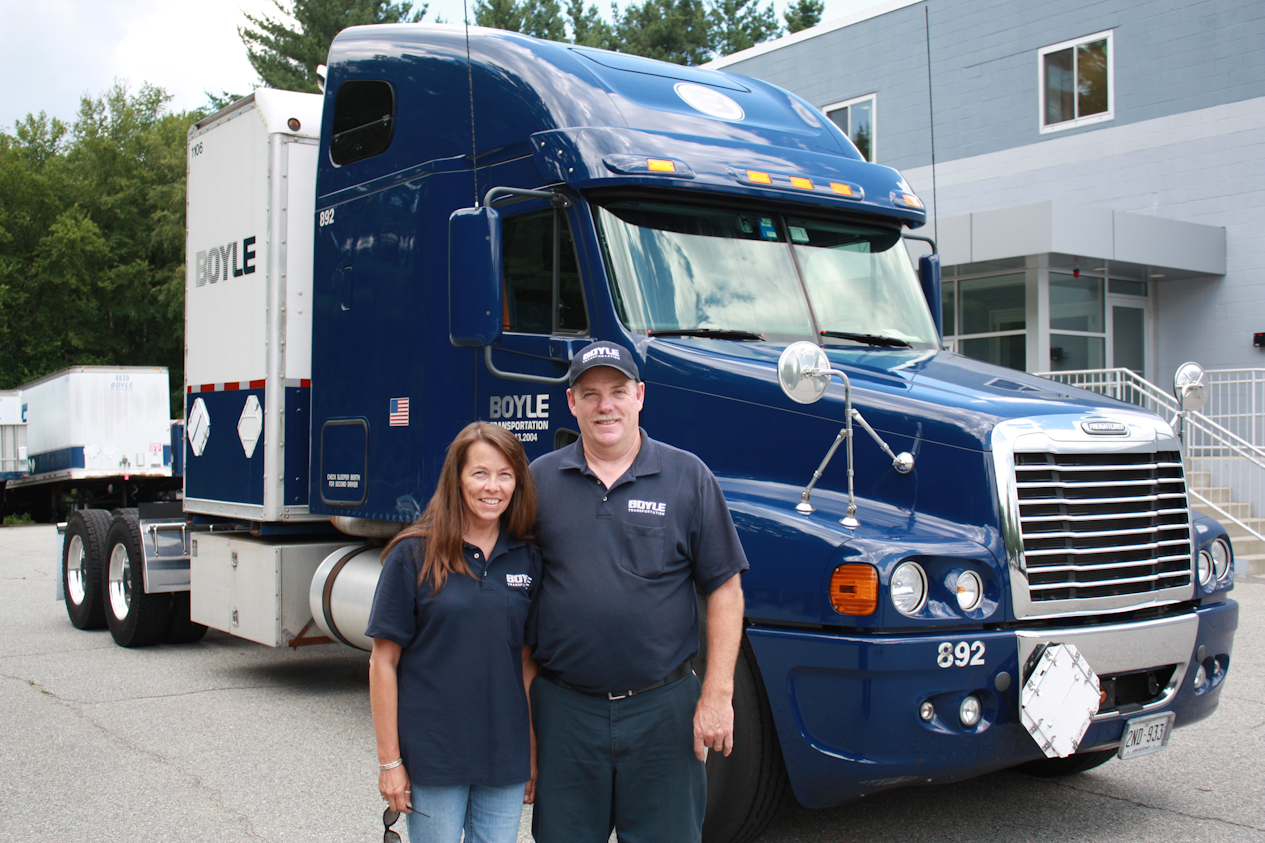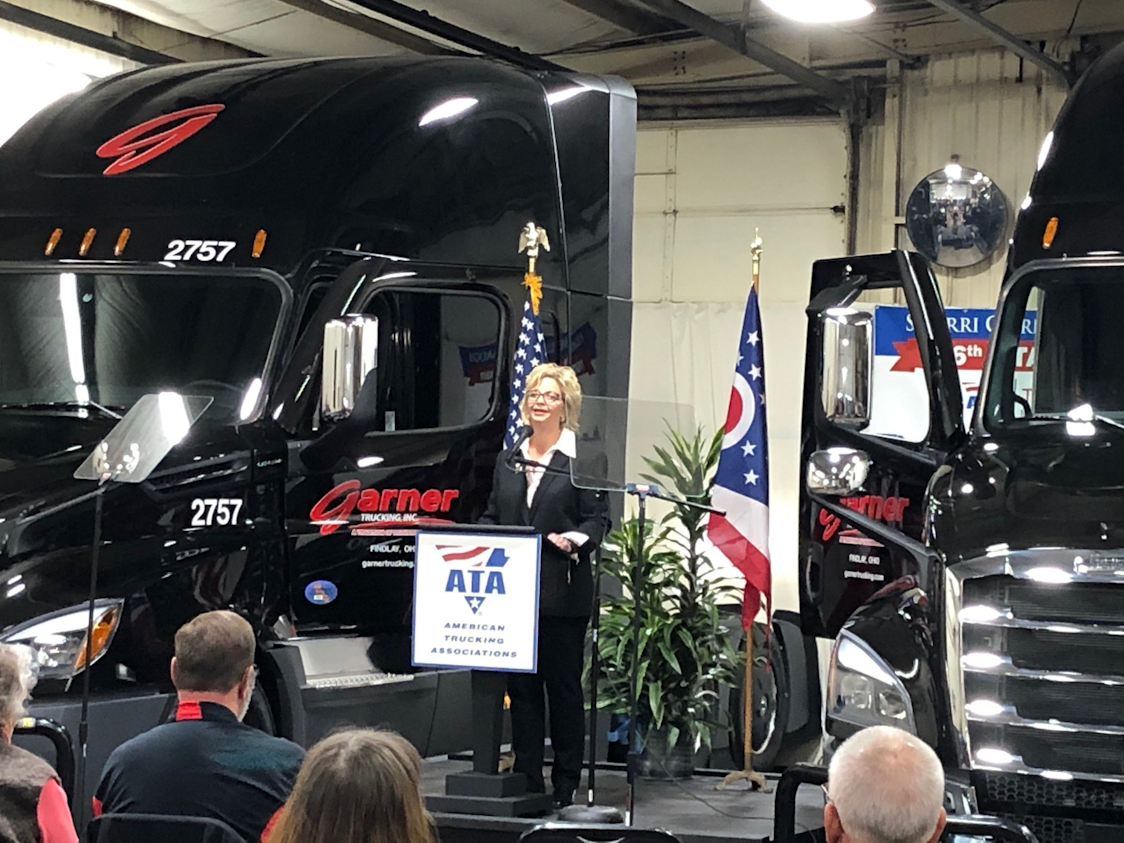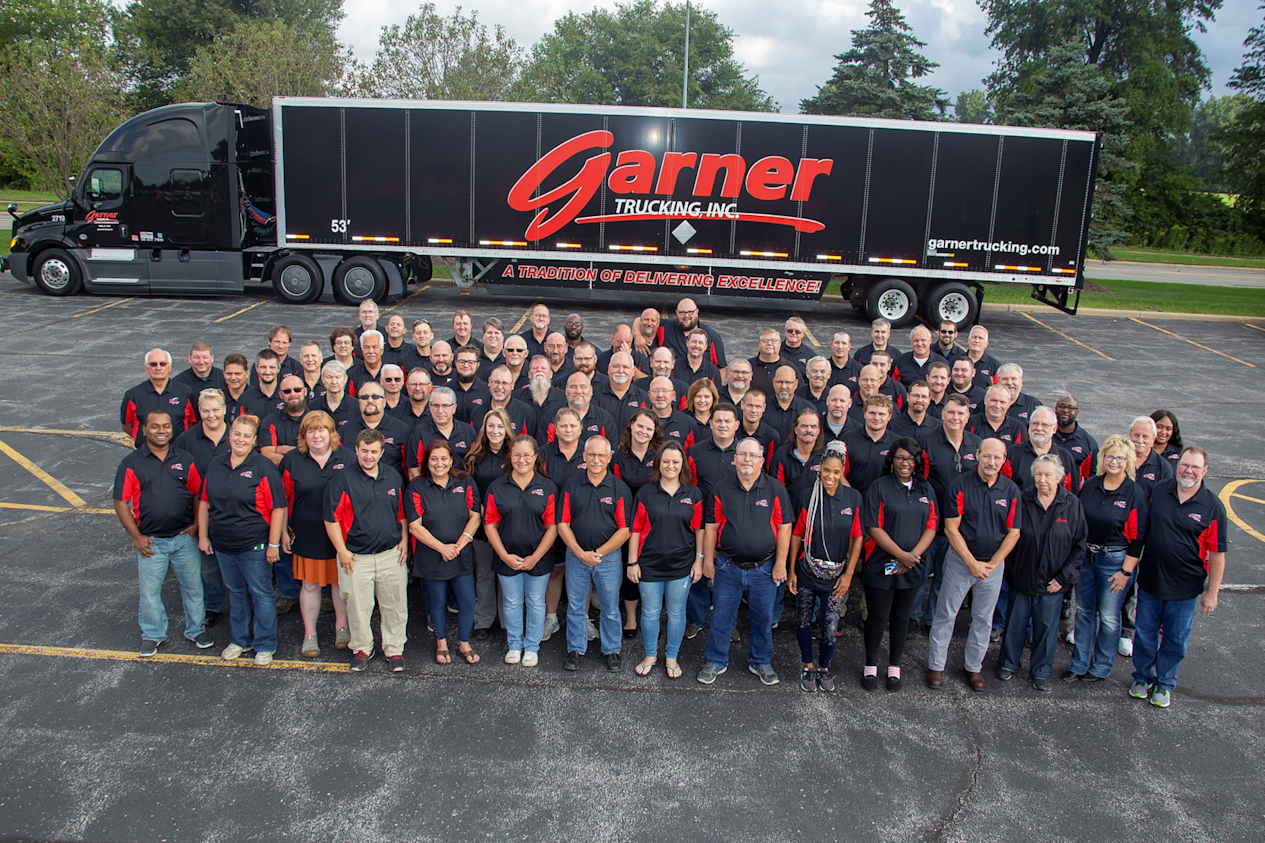Recruiting and retention efforts in the industry must be an ongoing and consistent process, particularly in today’s competitive labor market
Unrelenting supply chain disruptions and labor shortages exacerbated by the pandemic are causing massive delays in moving goods across the U.S. And the problem has worsened just in time for the holiday season, with a nationwide shortage of available truck drivers, and workers in general, straining the supply chain even further.
Recruiting and retaining an adequate number of qualified truck drivers consistently ranks as a top trucking industry concern, according to the American Transportation Research Institute (ATRI). Even before the pandemic struck, estimates from the American Trucking Associations (ATA) had the driver shortage topping 100,000 by 2023 due to projected freight growth, industry retirements, and competition from other industries, according to ATA’s 2019 Truck Driver Shortage Analysis.
To recruit new talent and keep the workforce it already has, commercial trucking companies are taking a hard look at their own operations to focus more on growth and improvement from within. That means getting creative and continuously working with drivers, technicians, dispatchers, and other back-office staff.
Whether it’s someone just entering the industry or just entering a new trucking company, improving an employee’s experience throughout that first year is key and all about ongoing training and engagement, according to Leah Shaver, National Transportation Institute (NTI) president and CEO.
As people acclimate to a new company, Shaver emphasized the importance of continuous engagement and open communication about what the future holds for them, as well as the entire company. She also noted that identifying first-year milestones and providing rewards and feedback to acknowledge how employees are progressing is important.
“Continue training and career path options for all levels of employees,” Shaver stressed. “I think there is a huge opportunity for ongoing engagement beyond onboarding for all employees, so they know career-path options within the organization.”
Some fleets do this really well, Shaver said, while others have a tougher time retaining employees. From NTI’s point of view, the fleets that succeed when it comes to recruiting and retention typically tie in technology and social media to enhance companywide engagement. Newsletters, Shaver added, are also a good tool to keep employees in the loop of important companywide updates, referral incentives, or job announcements.
Learning from ‘Best Fleets’
Andrew Boyle, co-president of Billerica, Massachusetts-based Boyle Transportation, pointed out that since the start of the pandemic, company employees have had to overcome a great deal of adversity, but they’ve managed to continue working with a sense of purpose and in an “inspirational fashion.”
With respect to the current labor market, Boyle explained that it has been challenging because there was so much stimulus pumped into the pockets of citizens over the course of the pandemic. After a while, he believes that put a damper on the availability and interest of many workers.
Regardless of what is happening in the market, however, Boyle Transportation, which was named a top Best Fleets to Drive For by CarriersEdge and the Truckload Carriers Association multiple years in a row, takes a different approach when recruiting new talent.
“We are never in the business of filling seats and trucks,” Boyle told FleetOwner. “We have high standards, and it actually attracts the kind of people we want. If they feel they are special, they want to work at a place that’s special.”
Boyle Transportation has a consistent pipeline of applicants, which Boyle chalks up to being selective and narrowing its funnel of applicants quite extensively.
“We’re paying people more for their brains than their backs,” Boyle said. “So, for their heightened level of and attention to detail, for example, and their familiarity with technology and their commitment to quality, safety, and security. Quality, safety, and security are what we sell to our customers, and we focus on the applicants who have demonstrated a commitment to those three criteria.”
Boyle has also de-emphasized mileage as a means of productivity and compensation. About 10 to 12 years ago, the carrier shifted from a mileage-based means of compensation and now guarantees a weekly minimum of $1,870 per person per week for first-year over-the-road drivers. The company also ensures that drivers are home at least two days for every week on the road.
“You’re removing the two biggest stresses; as a result, you’re giving people the opportunity to then rise up and become a professional because they are not so stressed about how many miles they are driving this week,” Boyle said. “Forget miles, let’s do things right. You’re going to be compensated at this level if you adhere to our quality, safety, and security standards. We want people to focus on what’s important to our customers.”
Through Boyle’s inclusion on the Best Fleets top 20 list year after year, the carrier has been able to determine which areas are worth investing in for further growth and improvement. For example, in recent years, the company implemented a professional driver advisory committee that rotates drivers who want to provide input. Through that committee, the company has gotten feedback on areas like equipment specifications and technological deployment.
Boyle also stressed the importance of being “wedded to a concept of continuous improvement.”
Another Best Fleet, Findlay, Ohio-based Garner Trucking is a family-owned, asset-based carrier with about 90 power units and has been in operation for the past 60 years. The company, which has made the Best Fleets to Drive For list for the past five consecutive years, is run by Sherri Brumbaugh, president and CEO. Brumbaugh also is the second woman to sit as ATA’s chairman.
Garner Trucking has worked to improve communications with drivers and other employees via podcasts, company town halls, and weekly YouTube videos. The carrier also implemented an app and upgraded its transportation management system to help drivers more efficiently acquire load information. Over the years, a key to the company’s success has been listening to drivers and employees.
“If you want to know where the bad spots are in your business, ask your drivers. They’ll tell you,” Brumbaugh told FleetOwner. “And I’m OK with that. I just ask that you tell me in a respectful manner.
“I am not perfect. We are not a perfect organization,” she added. “I could buy all kinds of bells and whistles and put all kinds of things on the truck, but you may not want it or need it. So, tell me what you need. Tell me what will make your job better.”
For example, if drivers need more home time, Garner Trucking will find a way to get them home more often, Brumbaugh said. The company also has hearing-impaired drivers as well as a culturally diverse group of employees.
“It’s just a different language and learning to communicate differently,” she noted. “You have to learn the way they communicate and be sensitive to the cultural needs they have within their family.”
Garner Trucking is also diverse in the different segments it offers drivers. The company runs local, over-the-road, and dedicated segments, among others, allowing drivers to find their ideal fit within the organization.
“Everyone has a different family structure and home-time environment,” Brumbaugh noted. “You have folks who have kids or those who don’t have kids; you have grandparents raising grandchildren. It’s an eclectic group of individuals, and we figure out what works for you and what works for us.”
Recruiting, retention best practices
Today, the demographic of long-haul professional drivers is changing, and the industry is seeing an entrance of more career changers than younger applicants compared to prior decades, Boyle pointed out. On the other side of the coin, the younger demographic entering the industry today typically doesn’t have the hands-on experience with heavy equipment that previous generations may have had.
Boyle Transportation has pivoted to a longer, more structured orientation and training process to accommodate the needs of this changing demographic.
“We might have done two or three days of onboarding 15 years ago,” Boyle pointed out. “Now we do a full five days and then ongoing training and providing the tools that they can access—help features, if you will. When [drivers] are over the road somewhere at two in the morning, not only do they have support they can call, but they also have digital tools to help them. That’s a dynamic that I would anticipate continuing.”
In addition, some five years ago, Boyle Transportation set up a formal mentoring program, where new drivers can seek the guidance of a more experienced team.
Atlas Logistics, a subsidiary of Evansville, Indiana-based Atlas World Group, provides both 3PL services and its own padded-van fleet. Services include project management for shipments like fine art, museum pieces, trade show exhibits, electronics, medical equipment, store fixtures, and more.
The company, which utilizes nearly 1,000 leased drivers qualified through the Atlas network and runs some of its own maintenance operations, has found that recruiting drivers and technicians is a daily challenge, Phil Wahl, president and CEO, told FleetOwner.
“I think there is a challenge, especially in Southern Indiana, on the technician side,” Wahl noted. “There’s not a lot of unemployment in our market at any time, but now it’s even tougher than it normally is. There is a challenge recruiting them, and once they get here, there are consistently companies trying to recruit them. Someone is always putting out a sign-on bonus or increasing hourly wages to try to lure technicians away from other companies.”
Like many companies over the last 18 to 20 months, Atlas also lost a handful of drivers who opted for early retirement when the pandemic hit. Wahl added that competitors are also becoming even more aggressive with their recruiting tactics to poach other drivers.
To retain its employees in a tight labor market, Wahl explained that Atlas has been heavily focused on creating a comfortable work environment and a home-work balance that works for everyone. Atlas has been utilizing its human resources department to ensure wages and benefits are competitive with the marketplace and to make sure the overall environment for all employees is a welcoming one.
In addition, the company started an equipment leasing operation for its drivers. Atlas has been buying newer model-year tractors with extended warranties and has been leasing them to drivers in a lease-to-purchase agreement. Wahl noted that has helped the company recruit some new drivers and has also allowed the company to help drivers who want to become owner-operators purchase their own truck.
The company has also begun helping owner-operators purchase liability insurance at a lower rate. “As a corporation, we made a big investment in the last six months into that piece of it and continue to invest by bringing in people on the safety side and insurance side of things,” Wahl noted.
Atlas has also increased its mileage compensation rates for drivers and has been advertising those new mileage rates to attract new drivers.
“Historically, our current drivers have been our best recruiters,” Wahl pointed out. “We do pay a referral bonus to our drivers if they give us a lead that turns into a new driver. We are doing advertising through social media, print, and billboards, but for the most part, mostly online and word of mouth is where we’re finding our applicants.”
In the office, Atlas increased its entry-level compensation to employees and has been implementing more flexible hybrid and remote working schedules. The company has also had to deal with vaccination challenges.
“You are going to have to listen to what your employees want and if you can adapt to that and accommodate them, you’ll be able to retain and attract talent,” Wahl explained.
Overall, when it comes to recruiting and retention, NTI’s Shaver’s biggest advice for commercial carriers is promoting and elevating people from within. That, she said, is especially important when fleets are operating in an environment where there is an abundance of retention incentives, like bonuses and pay increases.
“The best thing you can do is to continue to promote your own people and what they are doing—their achievements, their accomplishments, their performance, their customer wins, their new pay packages, et cetera,” Shaver said. “But do it publicly so that people who are not experiencing those same things within someone else’s walls are looking at what you’re saying and doing and thinking, ‘I want to be a part of that and experience a culture where leadership is talking with me regularly and openly about what I’ve done or promoting new opportunities within the same company publicly.’”
NTI also views new growth opportunities at a company as a potential recruiting tool.
Shaver pointed to work that the Next Generation in Trucking Association is doing by pairing up with high schools across the U.S. to provide trucking curriculums and promote access to federal funding to generate interest of students before they turn 18. Founded in 2020, the Next Generation in Trucking Association is a nonprofit trade association with a mission to promote trucking as a positive career choice, create CDL programs that encourage CDL and technician training opportunities, and ultimately connect them with employment opportunities.
In an October blog post, the association said that a consistent driver pipeline depends on acquiring top talent. But acquiring top talent requires an “astute recruitment strategy.”
According to the blog, that means retaining drivers is done most effectively through company culture adoption, nurturing talent, promoting skills and growth among the local community, and using public education to diversify the next generation of talent in the industry.
Industry image campaigns
As an essential industry, NTI’s Shaver expressed the importance of publicly talking about and celebrating trucking. That could mean touting commercial trucking companies as organizations that move the economy forward or publicizing the safety and technological advances the industry has made over the years.
“It’s not easy to do,” Shaver said. “We often have a marketing department that is responsible for marketing our services to potential customers, but that same marketing department is rarely responsible for marketing on our behalf to respective employees. But who better to carry your own message than your own people?
“In terms of looking more attractive, we deliver across North America. We have absolutely celebrated our own people and accomplishments throughout the pandemic, and it will continue, especially as the supply chain is experiencing a lot of issues as we go into the holiday season,” she added. “We need to do more to promote ourselves—not just our truck drivers, not just what we can do on behalf of a customer, but the whole package of all the great things we can do.”
For Shaver, building up the industry’s image is about how trucking companies are integrating themselves in the communities in which they live and serve. For instance, in 2019, NTI teamed with the Women in Trucking Association and hosted a group of Girl Scouts, who spent a day learning about trucking’s role in the supply chain and the industry’s focus on safety.
“If you have a company with 17 terminal locations, you have 17 potential communities to be promoting the industry, and specifically how you serve the industry and your community by supporting local events,” Shaver said. “Think as small as your own community and attend your county fair. Because of our Girl Scout experience, NTI introduced a volunteer day off each year. Have your employees identify one organization in your community that you can introduce trucking to, and let’s really ingratiate ourselves within our communities.”
And when it comes to filling in some of the recruiting gaps, Boyle said that telling the story of the industry, which employs nearly 8 million Americans, and communicating the opportunity is important.
“We have many image campaigns to help promote the industry and the awesome capacity that trucking has to create good jobs,” Boyle told FleetOwner. “Some elected officials talk about free education, but we actually provide that in our industry. Either through government support-sponsored programs or simply by fleets that pay for tuition and training at credentialed driving schools, we are providing that already without additional cost to the taxpayer.”
When it comes to delivering that message across various communities, Garner Trucking’s Brumbaugh said the onus is on commercial carriers. And as a self-declared teacher by trade and trucker by heritage, Brumbaugh also thoroughly believes in the value of ongoing education and training.
“It’s your job to tell people what you do so they know when they drive by your business that it’s a family-owned trucking business,” Brumbaugh urged. “It’s your job to let your community know, ‘They have been here for 62 years, they support the community, and they provide good wages. Those are the kinds of things you want your community to know.
“We are a small trucking company sitting here in northwest Ohio in a small community off the beaten path, and it’s sharing what you do, who you are, and your culture,” she added.
Brumbaugh also stressed the importance of making sure all drivers, technicians, and others coming into the industry have the best experience possible.
“Just think of all the individuals who come to us in trucking and have terrible experiences,” she said. “That’s on us, and that’s on our customers. We’ll hire drivers right out of truck driving school, and they are so excited. [Then] they get out there and they just have terrible experiences where they get hung up in traffic, can’t find parking, get to a shipper and can’t park, or are just battling the weather.
“There are a lot of negative things out there, but there are more positives than negatives,” she continued. “It’s on us, I believe, as trucking company owners, shippers, and receivers to make sure that these individuals know they are essential.”
And with today’s current labor market challenges, Brumbaugh emphasized that being patient with people is key to making sure they have a good experience and remain in the industry for the long haul.
“Too soon did the essential worker title get forgotten with our drivers,” she explained. “Do we really have to wait for another toilet paper shortage to realize how important truck drivers are? I hope not.”
Source: https://www.fleetowner.com/









